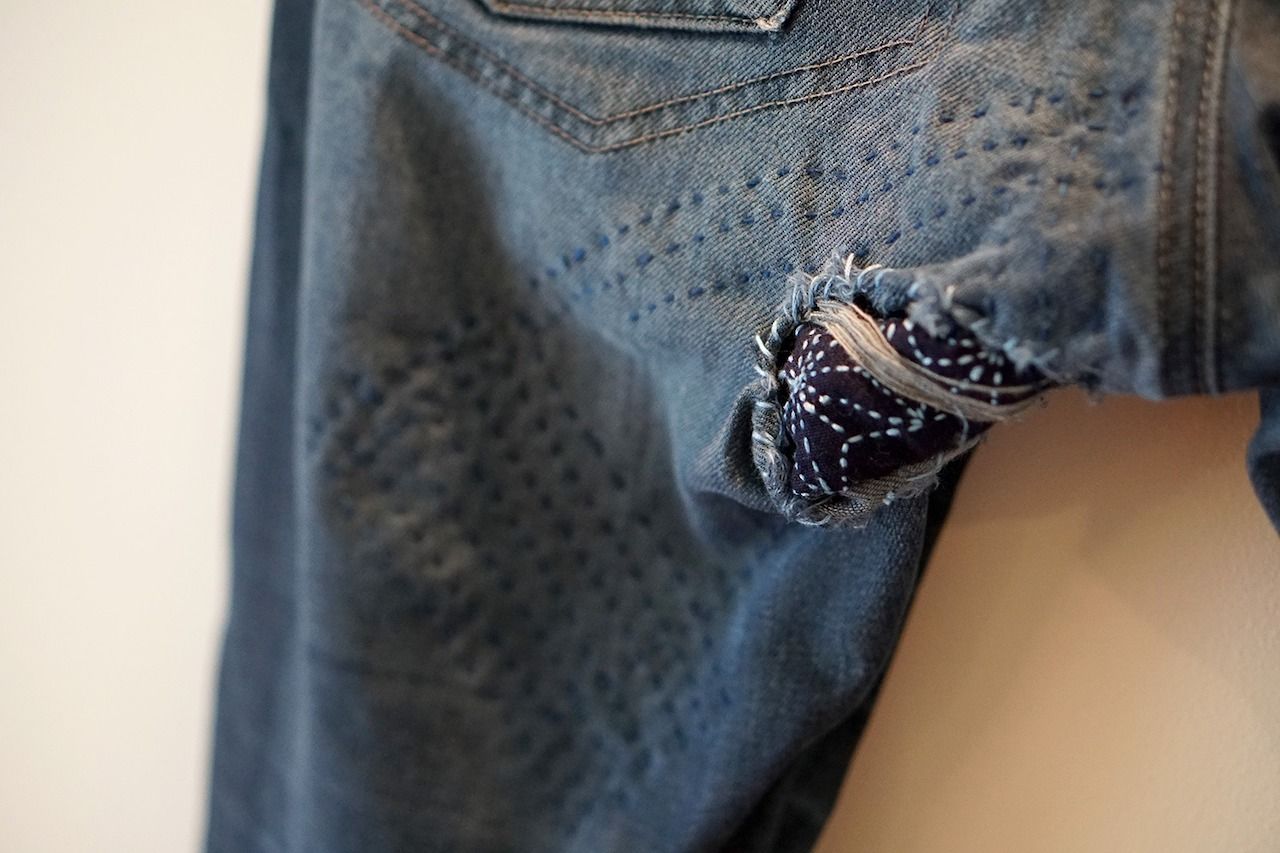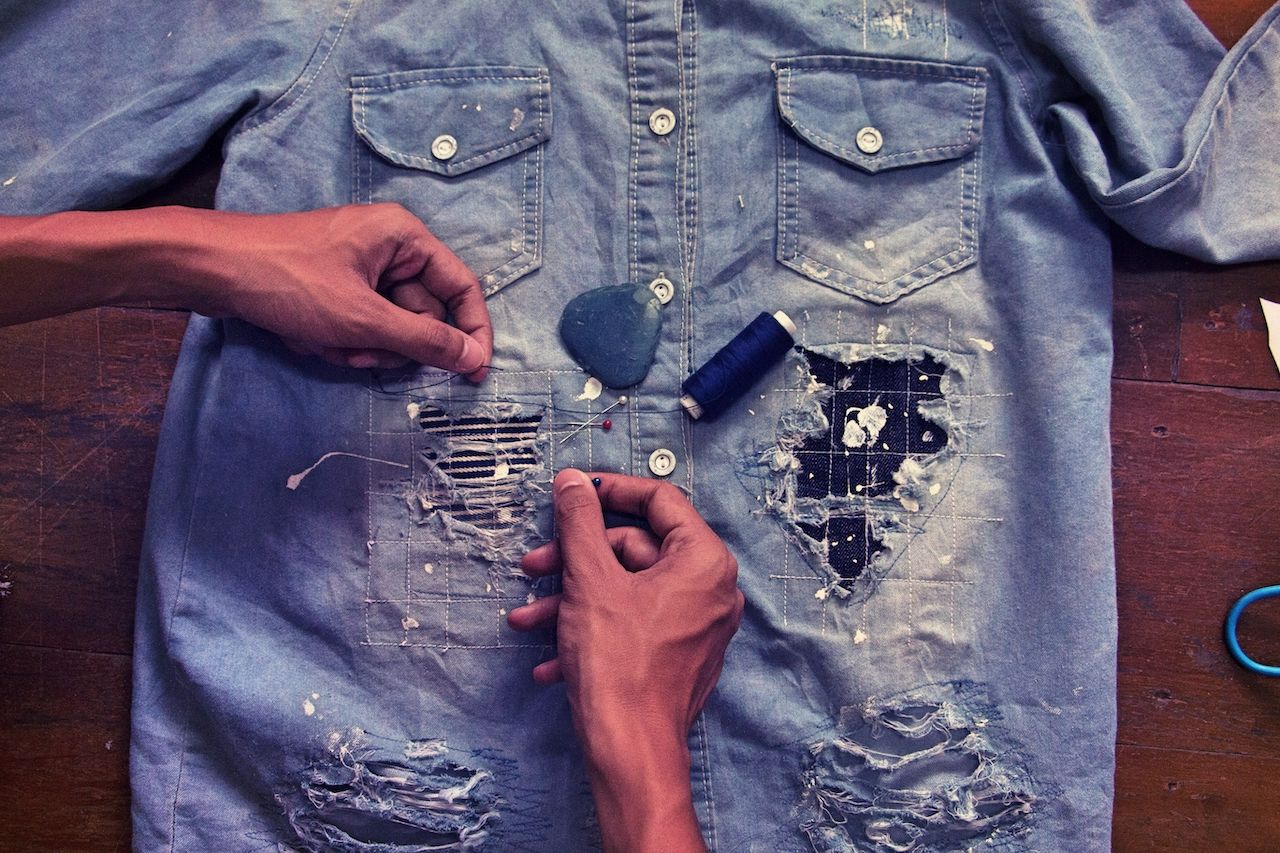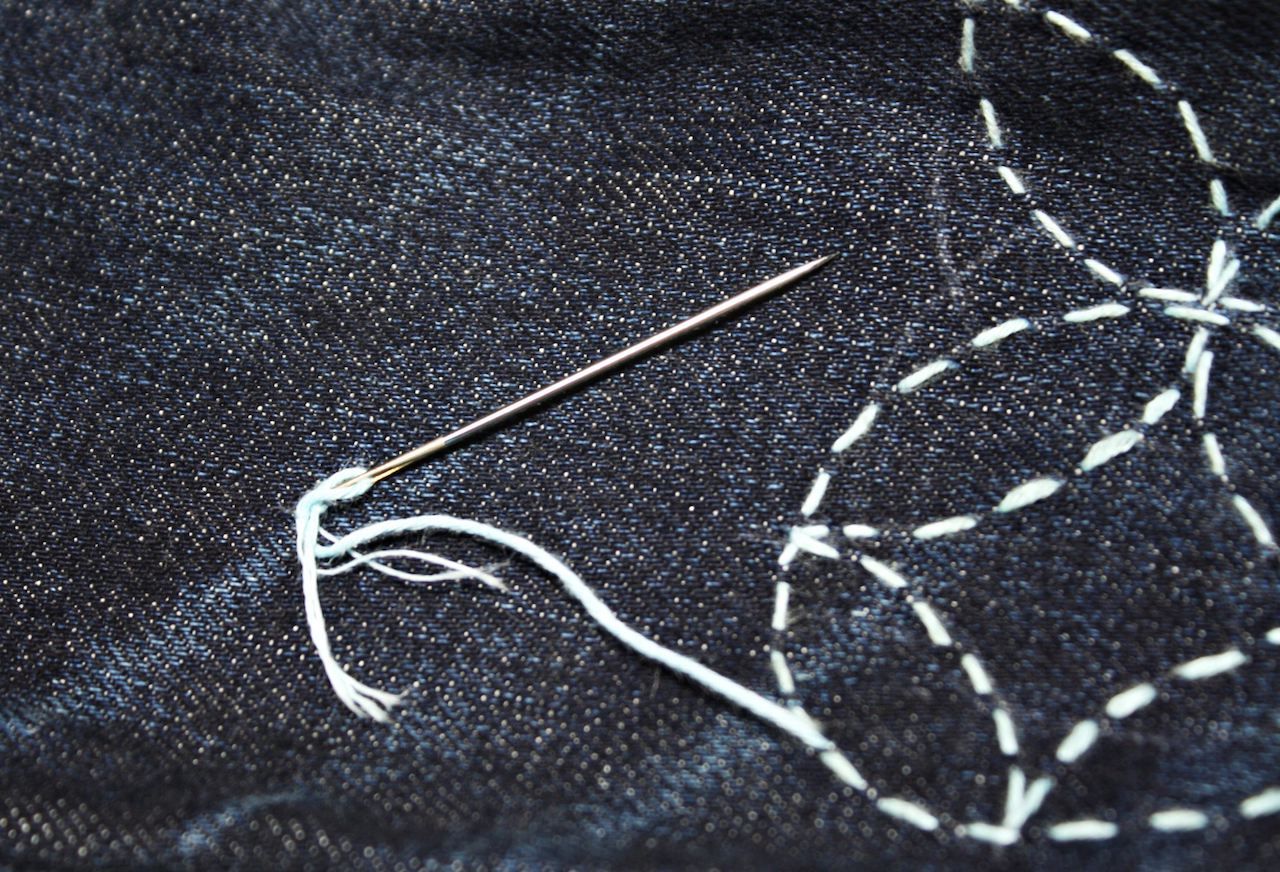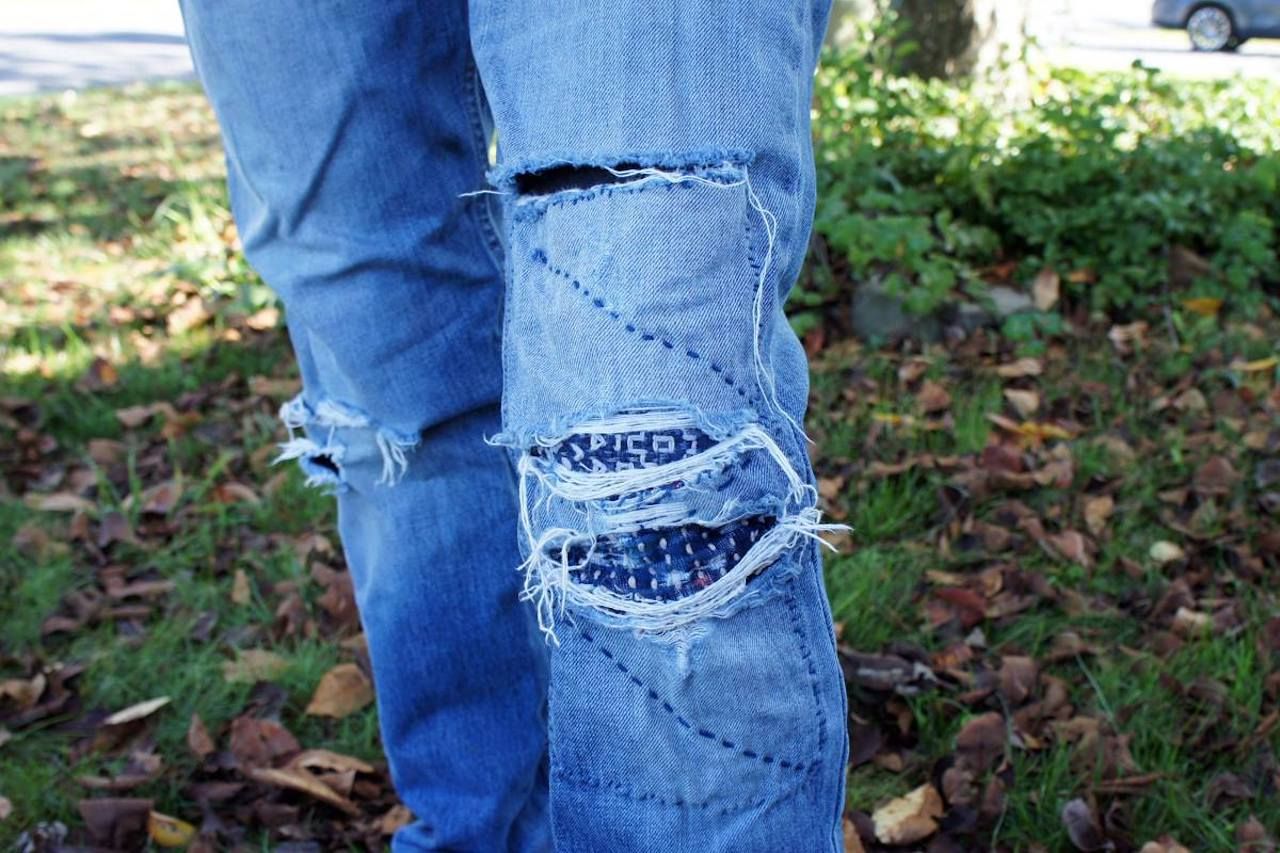Mending has seemingly fallen out of fashion. Few people bother to darn their socks when holes appear in them, and next to no one patches their torn jeans, changes their broken zippers, or replaces the waist elastic on their sweats. Instead, we chuck the damaged clothes in a donation bag and buy new ones. Blame it on the loss of sewing skills that used to be passed from generation to generation, the lack of time in our busy schedules, or our obsessive consumerism — whatever the reason, the results are a lack of care and appreciation for our possessions and immense environmental damage.
But sashiko, a traditional Japanese mending technique, can be our saving grace. Although not a new invention, this form of folk art rooted in humble beginnings is becoming a trend in the western world. There’s no need to know how to sew perfectly or even know how to use a sewing machine — a simple thread and needle and a will to let go of perfectionist ideals will have you look at your busted clothing items in an entirely different light.







